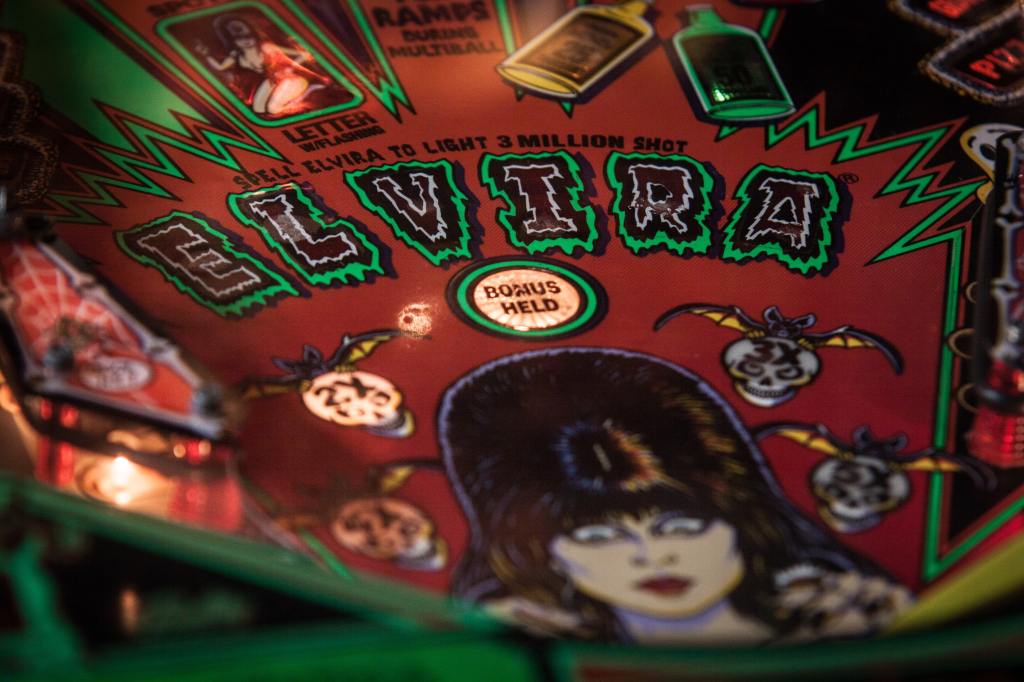
Sadie, who was the spitting image of iconic Elvira except she donned a white streak running down her charcoal colored hair, and I volunteered to coordinate weekly Thursday community lunches at a church hall back in the late 80s. Dressed in casual work attire, I’d leave my day job, located a few minutes away, during my lunch hour, which typically turned out to be more like an hour and a half. Sadie’s small, “clown car,” that her boyfriend purchased for her, usually pulled up instantaneously when my Subaru did. I’d recognize her six-foot-long stature crunched behind the steering wheel. All four doors would fling open and, along with Sadie, about a half dozen characters of an eclectic combination flew out. Each one, it appeared, she picked up at different spots throughout the region – starting at a drag show and ending at the homeless shelter.
“Hey! How ya doing?” she’d shout. Everyone within earshot heard her thick, Bronx accent. Additionally, when she asked the question, it appeared that she actually cared to know about you.
In fact, over the next two years of our volunteer commitment, I tested her sincerity and, likely, dumped way too many issues, mostly about living the single life, on her. Even though we came from two completely different worlds, she never judged or flinched, only listened and validated my feelings. About twenty years older than I, I not only appreciated Sadie’s listening skills, but also her sharp tongue that she attributed to tending a bar in the South Bronx, New York, for most of her life. In addition, she had an acid wit and an uncanny ability to make people laugh in spite of themselves.
Unlike most everyone else who fit into society’s norm, Sadie despised the norm. She was an outsider from her very beginning and, thus, found it difficult to connect with others, even though she tried to conform to the norm in her younger years by marrying her high school sweetheart at 21 years old. You see, she was raised in a traditional household at a time when women did not work outside the home. The only roles available to them were being wives and mothers. Shortly after Sadie’s marriage, she birthed her first daughter. By the time she had her third daughter, she had sunk into alcohol during her unhappy marriage. She eventually ended up divorced and married two more times afterwards. During her third marriage, when she heard about an opening for a barmaid at the local bar, she applied for it because it seemed like an interesting job that would allow her to use her skill set and allow her to earn her own money. As soon as Sadie found success as a barmaid, she divorced her husband, with whom she shared a daughter, her fourth. He was not supportive of her working outside the home, and she was not about to stop. A few months after her third and final divorce, she hitched up with a new boyfriend. With a burning desire to quit alcohol and turn her life around, what she would soon learn as she sought therapy and dealt with her insecurities and struggles was that she bought society’s “faulty bag of goods” early on and, by doing so, never acquired the faith in herself to believe she was good enough as a woman to survive on her own without a man meeting her needs instead of her.
Long story short and a trail of boyfriends later, Sadie managed to kick off alcohol and live sober and, in the interim, quit her job at the bar. Her current boyfriend supported her, and she was not afraid to admit it. In fact, she was proud of it because she accepted her human fragility and was the first one to laugh at her foibles.
I met her at a wonderful crossroads in her life. She was in the process of meeting two of her personal goals. One, she was saving money in order to enroll in a nursing program at a university. Two, she was trying out for community theater auditions to quench her thirst for theatrical endeavors.
After peeling off all the damage from the wrong influences, she finally became true to herself. She wasn’t afraid to be different and she refused to conform to societal standards. In other words, she wove all her many painful moments in her life into a one-of-a-kind tapestry.
Sadie believed she was given a second chance and wanted others also to feel connected and loved and not shunned like a misfit. Guided by her new vision of self-acceptance, she befriended the friendless. Through their relationships, she discovered that they had a wealth of knowledge and experience that she could draw upon in her own life.
Anyway, I wasn’t as accepting. For instance, while we prepared the Thursday luncheons, none of her so-called friends lifted a finger to help. One of them, likely in his mid-twenties, who wore brown sandals with thick blood red socks in every season, sporadically stormed in and out of the building. His fury made you think he was a doctor headed to save someone’s life. Most of her other friends literally slept where they were seated. It was easy to figure out they were on some heavy duty meds. The one who really annoyed me was Jenn, but sometimes called Jim. Jenn, as I’ll refer to her now to keep it simple, was not a fan of mine. She shadowed me unbearably close wherever I went except, thankfully, to the restroom. Sometimes, I felt Jenn’s sour breath on my neck directly below my ear and, on occasion, I’d hear murmured grunts.
“Sadie!” I commanded nearly every week, “You just can’t bring these people here! They are not in their right minds. I’m waiting for the Thursday that Jenn just punches me. I mean, I don’t feel safe.”
“Safe?” Sadie asked with a cackle. “Safe? And, who would you say is safe in this world? Do you think my friends are safe? Jenn follows you around because she likes you. Is that so bad? If she were dangerous, do you really think I’d expose her to you or anyone else? I will ask her to step farther away from you, but my friends deserve the same sort of respect you do. Don’t we all have a right to be here? Can’t we all breathe the same air even though we are different? Is this YOUR world alone?”
“Well … “
“Are you saying they are different from you? That they don’t belong here with us?” she roared. During the pregnant pause that followed, all her friends, even the ones asleep, woke up and edged closer to us, forming a circle around us.
“Are they?”
“Well. Umm. No,” I reluctantly admitted.
“Okay then, we’ll see you next Thursday.”
Thursday after Thursdays, I grew to know Sadie and her EXTREMELY interesting friends. In the same manner as Sadie, through their relationships, I was able to learn more about myself and grow in ways I never thought possible. You see, the common theme among Sadie’s group of friends that supplies faith to me to this day is how to overcome a series of unfortunate events and sad circumstances.
The story, though, doesn’t end here. I’ll share the rest in next week’s blog. I won’t spoil the ending, but I will divulge that it is sad, but one that leaves you thinking about faith and hope and how we can still find purpose and a deeper meaning during some of our darkest moments — if we can decipher and are willing to wear the right corrective lenses.





